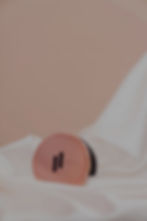
Adhesion and Anti-Tangling
In cases where adhesion is high in use on different product surfaces, PVD coating reduces the adhesion rate and helps the products to be separated easily.
Coating Types
Industries Used
These coatings reduce the surface energy of the material, reducing the interaction of the material with other materials.
Some PVD coatings that prevent sticking and tangling include:
-
Diamond Like Carbon (DLC): DLC coatings have a low coefficient of friction and offer excellent adhesion resistance. These coatings are used in many applications, from automotive parts to medical instruments.
-
Titanium Nitride (TiN):It is known that TiN coatings can have a low coefficient of friction, which may prevent adhesion in some applications.
-
Graphene Coatings:In recent years, graphene has been evaluated as a potential PVD coating material due to its low coefficient of friction and anti-adhesion properties.
Some areas where PVD Coating is used as an anti-adhesion and anti-tangle:
-
Tools and Tools: For cutting tools, drilling tools and other metalworking tools, PVD coatings are used to prevent material from sticking to the tool and increase wear resistance.
-
Automotive Components: For components where friction and sticking may be a problem, such as engine interior parts, PVD coatings are used to improve performance and reduce wear.
-
Aerospace: For aerospace parts exposed to high temperature and friction conditions, PVD coatings help prevent adhesion and wear.
-
Biomedical Applications: PVD coatings for stents, catheters and other medical instruments are used to inhibit adhesion to body fluids and tissues.
-
Electronics and Semiconductors: PVD coatings are used in some microelectronic components and semiconductor manufacturing equipment to prevent unwanted material adhesion.
-
Food Processing and Packaging: In food processing equipment and packaging machinery, PVD coatings are used to prevent foodstuffs from sticking to equipment surfaces.
To determine which of these coatings are most suitable, consideration should be given to the specific needs of the application, environmental exposure conditions, and other factors. Choosing the right coating can be critical, especially in industrial applications where issues such as friction, wear and adhesion are critical.
%20(1).jpg)





















